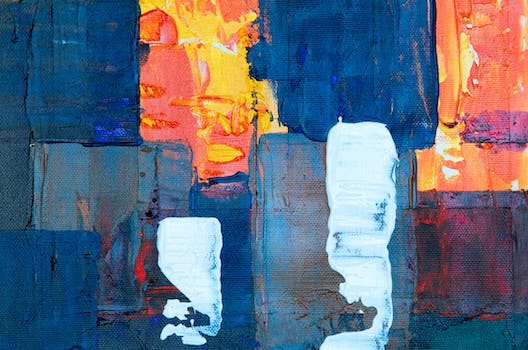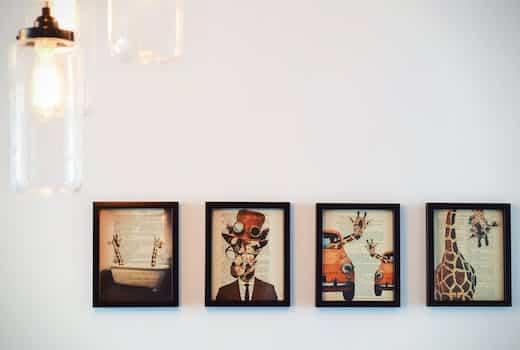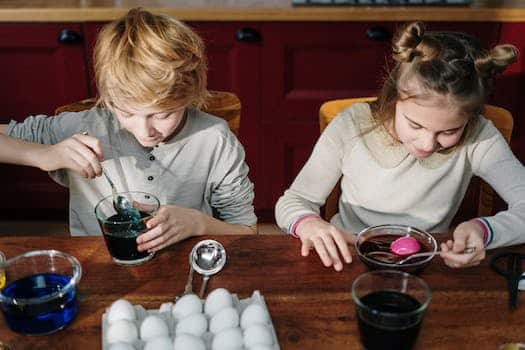Are you searching for a way to make your walls stand out? Painting on textures is a fun and original approach to give a room a new look and feel. There are several possibilities to consider if you want to draw attention to a specific area or give a flat surface more depth and character. In this post, we’ll take a look at 10 unique ways to add texture to your walls through painting. Prepare to make a powerful statement with your newfound ability to think outside the box.
- 1. Introduction
- 1.1. What is textured wall painting?
- 1.2. Benefits of textured wall painting
- 1.3. Popular textured wall painting techniques
- 1.4. Choosing the right textured paint
- 1.5. Preparing the wall surface
- 2. Textured Wall Painting Techniques
- 3. Creative Ideas for Textured Wall Painting
- 3.1. Geometric patterns
- 3.2. Faux brick or stone
- 3.3. Ombre effect
- 3.4. Stripes or chevron
- 3.5. Nature-inspired textures
1. Introduction
Textured wall painting ideas are a terrific way to give your walls a one-of-a-kind and eye-catching look. Walls with different textures not only make a room feel more unique and interesting, but they also serve as a visual focal point that can improve the room’s attractiveness. There are a wide variety of innovative approaches to achieving beautiful textured wall patterns, whether you want to cover up a wall’s flaws or create a bold statement. This post will provide you with 10 unique textured wall painting ideas that will help you improve the aesthetic appeal of your home.
1.1. What is textured wall painting?
Painting walls with textures is a common practice for adding visual interest and depth to interior spaces. To get this effect, different textures are applied to the wall surface. Depending on the aesthetic you want to achieve, the textures might be anything from understated patterns to bold motifs. Walls painted with textures are not only more visually appealing, but also more interesting to touch. It can be utilized to add visual interest to an otherwise uninteresting wall or to support the aesthetic of an entire space. There is no limit to what may be accomplished in the realm of textured wall painting because to the wide variety of tools, materials, and painting styles available.
1.2. Benefits of textured wall painting
Adding texture to painted walls is a modern and creative approach to update the decor of any room. The possibilities for using textured painting techniques to enhance the appearance of your walls are practically limitless. The advantages of textured wall painting range from the creation of a gentle and inviting ambience to the making of a striking and eye-catching statement.
The ability of textured wall painting to disguise surface flaws is a significant benefit. Walls that aren’t perfectly straight or have been damaged might be made to look like new by using textured paint.
Furthermore, textured wall painting makes your walls more intriguing and visually appealing by adding a tactile element. The textures can be as subtle as patterns that only barely register the eye to as bold as those that command everyone’s attention.
Textured wall painting can also improve the acoustics of a space. Sound waves are absorbed by textured surfaces, lowering reverberation and increasing clarity. Because of this, textured walls are ideal for noise-sensitive environments like listening rooms, offices, and movie theaters.
In addition, you can express yourself artistically and uniquely through textured wall painting. You may express your individuality and style through texture design by using any number of available methods and materials. Painting with textures allows you to produce any desired aesthetic, be it rustic, industrial, or modern.
In conclusion, textured wall painting has several advantages, such as the capacity to cover flaws, enhance aesthetics, boost acoustics, and encourage individual expression. Textured painting is a great option if you want to add some visual interest to your walls in a unique way.
1.3. Popular textured wall painting techniques
Painting walls with different textures may make a room feel more three-dimensional and provide visual appeal. There are many options available for improving the visual appeal of your home, whether you want to go for a more traditional design, a more contemporary one, or somewhere in between. Here are some unique ways to use textured paint to make your walls look like pieces of art. You may express your individuality and make your home truly unique by using any number of these methods, from the elementary to the complicated. The potential for textured wall painting is practically limitless, so let’s dive in!
1.4. Choosing the right textured paint
The visual appeal of a room can be substantially improved by selecting the appropriate textured paint. Textured wall painting is an adaptable and artistic method that may be used for a variety of purposes. There’s a broad variety of textures and finishes to pick from, so it’s best to think about the room’s design and function as a whole. How to choose the best textured paint for your walls is covered in detail below.
1.5. Preparing the wall surface
The first step in painting a textured wall is always preparing the wall surface. The paint will stick better and the surface will be smoother if it has been properly prepped. Here, we’ll go over the measures you should take before applying any textured paint to your wall for maximum artistic effect.
First, make sure the wall is spotless. Use a mild detergent solution and a sponge to get rid of the dust, filth, and grease. Place extra emphasis on cleaning the areas around windows, doors, and corners.
Next, check for breaks, holes, or other flaws in the wall. Fill the holes with putty or spackling compound and sand the surface smooth. The textured paint will adhere better to a smooth surface.
Priming the wall after patching and sanding is a good idea. Priming aids in surface sealing, paint adhesion, and consistent color absorption. Pick a primer that works with your wall material, and spread it around with a roller or brush.
The textured paint can be applied once the primer has dried. But first, cover the floor and any nearby surfaces with drop cloths or painter’s tape to prevent any paint from getting on them. The result won’t be messy splatters or spillage.
In conclusion, prepping the wall surface is essential if you want to get good results when painting a textured wall. If you follow the aforementioned procedures, you’ll have a surface that’s ready for your imaginative textured paint.
2. Textured Wall Painting Techniques
Painting techniques that create textures on walls can give a room a sense of depth and variety. Textured painting can be a terrific way to make a statement or give your walls a personal touch. Here are 10 unique approaches of painting textured walls:
First, there’s the sponging method, in which a sponge is used to impart a textured finish to the walls. Color and texture are tools you can employ to create unique visual effects.
Walls can be decorated with elaborate patterns and decorations using the stenciling technique. There are many different stencil patterns available to pick from.
Third, the Venetian Plaster Method requires building up numerous coats of plaster to achieve the desired smooth and textured look. It has the potential to improve the aesthetic appeal of your walls.
The fourth technique is called “ragging,” and it entails making a gentle texture on the walls by rubbing them with a rag. It can be used to make your walls look old and weathered.
Stippling is a painting method in which little dots or stipple marks are applied to a wall using a brush or sponge. This method can be used to give your walls a three-dimensional appearance.
The sixth technique is called “combing,” and it entails making straight or curved lines on the walls with a comb-shaped tool. A striped or linear pattern can be made using this method.
Dragging is a painting technique in which lengthy, dragging strokes are made on the walls using a brush or cloth. The results of this method can be both textured and striking.
Eighth, use a soft cloth or sponge to produce a smudged and blurred effect on the walls by smudging. It can be used to create a hazy effect on the walls.
To apply and smooth plaster or joint compound on walls, the troweling method is used. This method can be used to provide a smooth, elegant finish.
Using a variety of tools and materials, faux finish artists may create the appearance of natural materials like marble, wood, and stone. Using this method, you may give your walls a one-of-a-kind and lifelike look.
These are merely a few suggestions to help you get started with painting textures on your walls. Feel free to try out various color palettes and design methods to find what works best for you. Walls should be carefully prepared before beginning, and each technique should be tested in a small area before being applied to the entire wall.
2.1. Sponging
The COVID-19 epidemic has contributed to the rise in remote work that has occurred over the past few years. Businesses in many sectors now allow their staff to work remotely as a way to cut costs and increase productivity. This article delves into the advantages, disadvantages, and success stories of companies that have adopted the remote work paradigm by analyzing best practices and providing case studies.
Successful techniques and methods for implementing and managing remote work can be gleaned from case studies and real-world experiences. The purpose of this summary of case studies is to demonstrate the variety of sectors and businesses that have adopted remote work and the success they have found as a result.
Readers can benefit from the insights gained from examining these case studies by applying the lessons learned to their own remote work environments. This post will be helpful whether you are an employer wanting to improve your remote work policy or an employee searching for ideas on how to make the most of your remote work situation.
The following parts will focus on detailed case studies, dissecting the difficulties encountered, the approaches taken, and the final results obtained. Each case study will provide a new angle and illuminate a distinct facet of remote work, giving readers a richer knowledge of the subject as a whole.
2.2. Stucco
With more and more people choosing to work remotely, it’s crucial that businesses and workers alike agree on a set of standards that will ensure everyone stays productive and successful. Key best practices for working remotely are as follows:
First, set up a specific workplace at home where you can do your work without being distracted by other things. This will assist you in keeping a professional demeanor and a sense of order.
Establish a regular work regimen to maximize productivity and efficiency, and then stick to it. Establish start and end timings, break periods, and make your availability known to coworkers.
Third, learn to effectively communicate with others online, as this is a crucial ability for any remote worker. Maintain open lines of communication by utilizing means such as video conferencing, IM, and online project management software.
Fourth, lay out the groundwork for success by agreeing upon specific objectives, timelines, and deliverables with your superiors or coworkers. Doing so will aid in keeping everyone on the same page and guarantee timely project completion.
Self-care must be a top priority because working from home can make it difficult to distinguish between work and personal time. Get some exercise, schedule some time off, and keep a reasonable schedule.
Individuals and businesses alike can benefit from these tried-and-true strategies for remote work. By adhering to these recommendations, you may make the most of your remote work experience in terms of productivity, teamwork, and happiness.
2.3. Brushing
One of the most essential methods for making textured wall paintings is brushing. Texturing a wall requires carefully applying paint with a brush in a predetermined pattern. Changing the look of your walls is as simple as switching up your brush technique.
The cross-hatch technique, in which brush strokes are applied in a crisscross pattern, is a common one. The walls will have more depth and dimension after applying this method. Stippling is another method, in which the paintbrush is dabbed into the wall to produce tiny spots of color. The textured impression achieved by stippling is similar to that of stucco or plaster.
Another method for making distinctive textures is dry brushing. When dry brushing, only a small amount of paint is loaded onto the brush, and the remainder is removed using a rag. The brush is then dragged very gently across the wall, creating an almost imperceptible texture that resembles brushstrokes.
Sponging is a method of wall painting in which the paint is applied with a sponge. The sponge can be used to create a variety of wall textures simply by dabbing or spinning it on the surface. Sponging can produce a mottled or sponge-painted finish, lending an artistic air to the walls.
These are but a few of the countless brushing techniques available for use when creating textured wall effects. Homeowners can add a touch of personality to their walls and make a spectacular visual impression with any of these methods.
2.4. Ragging
Ragging is a common method for creating a textured finish on walls. The walls are given a distinctive texture by means of a rag or fabric. This method gives the painted surface a more three-dimensional appearance. Ragging is a versatile option for any wall because it can be done with both water-based and oil-based paints. The ragging effect is achieved by randomly dabbing or rolling a rag that has been dipped in paint onto a wall. This produces a subtle speckled effect that enhances the room’s aesthetic. To add a touch of class and sophistication to your walls, rag hanging is a wonderful choice.
2.5. Troweling
The use of a trowel is a common method for creating a textured wall finish. Joint compound or plaster is troweled onto the wall in a very thin layer. The wall takes on a distinctive and artistic appearance as a result of the textures and patterns created by the trowel. This method is frequently used to provide a weathered or industrial look and feel in home decor. There are a variety of troweling techniques, such as smooth troweling for a sleek, polished effect and rough troweling for a more natural, textured look. Achieving the intended effect calls for talent and precision, but the payoff may be breathtaking. Troweling is a terrific method to explore for any textured wall painting project, whether you want to add texture to a single accent wall or completely change a space.
3. Creative Ideas for Textured Wall Painting
Walls painted with different textures look amazing and give a room more personality. Whether you’re trying to draw attention to a specific area or improve the room’s appearance generally, textured walls may make a big difference. Ten unique approaches to painting textured walls are provided here.
One example of a wall texture created with stencils is an intricate design. With this method, you can create a style all your own.
Second, faux brick texture: paint your walls to look like exposed brick to achieve a rustic, industrial look and feel. This method enriches a room with richness and personality.
Create a beautiful ombre effect by gradually blending several tones of the same hue on your walls. This method includes a touch of class and refinement.
The use of metallic paints can give the impression of opulence and sophistication when applied to the walls. In a contemporary or modern context, this method shines.
5. Sponge Painting: Dab paint over your walls with a sponge to achieve a textured and mottled appearance. The use of this method is ideal for accomplishing this.
Sixth, Geometric Texture: Paint geometric patterns on your walls for a contemporary and chic look. This method can be modified to fit your needs while also adding visual appeal.
Make textured stripes on your walls with painter’s tape and textured paint for tip number seven. Using this method, you may infuse your interior with a sense of fun and motion.
Applying a stucco texture to your walls can give your space an elegant and timeless feel. The classic and Mediterranean aesthetics of your home will complement this method perfectly.
Let your imagination go wild by painting abstract textures on the walls. With this method, you can try out various paint application strategies.
Ten. Textured Accent Wall. Use a textured paint finish on a single wall to draw attention to a specific area. This method makes a bold statement and highlights a certain spot in the room.
The following are a few suggestions for your next textured wall painting job. Make some art, have some fun, and decorate your walls!
3.1. Geometric patterns
Using geometric patterns is a common way to update a room and make it more aesthetically appealing. Incorporating geometric patterns into textured wall painting can produce a striking and one-of-a-kind appearance. Use these unique approaches to painting textured walls with geometric patterns:
One of the most dynamic and eye-catching wall designs is a chevron zigzag pattern. Painter’s tape can be used to make straight, precise lines for this pattern.
Create a geometric masterpiece on your walls by playing around with various sized and arranged triangles and diamonds. Both striking and understated color schemes will benefit from this pattern’s versatility.
Hexagon Honeycomb 3 Embrace the elegance of hexagons by painting your walls in a honeycomb design. This complex design creates the illusion of more space and depth.
Create a geometric mural to elevate your textured wall painting to the next level. This could be a multi-part geometric shape or a large-scale pattern.
Painting geometric borders around your walls is a simple way to make your space look more put together. For a more creative result, you can use stencils or paint freehand.
Conjoin the popular ombre effect with geometric patterns by blending gradations of the same color or complementary colors to create the Geometric Ombre effect. This results in a very exciting and eye-catching visual effect.
Seventh, an accent wall with a geometric pattern can make a strong visual statement. A contrasting hue or palette might be used to achieve this effect.
Stencils allow you to make complicated and accurate geometric designs on your walls. Because of this, it’s simple to replicate, and the lines stay neat.
Textured geometric shapes are a great way to give flat geometric patterns more dimension and appeal. Paint a geometric design, for instance, and then go back over it with a sponge or brush to give it some texture.
Ten. Geometric Color Blocking: Paint large, geometric forms in contrasting colors to make a bold, contemporary statement. To do this, simply paint various shapes using complementary or contrasting hues.
There are countless ways you can use these inventive strategies for painting textured walls in geometric patterns to turn any room into a work of art.
3.2. Faux brick or stone
Faux brick or stone is one method of adding visual interest to plain walls. Any area can benefit from the rustic and distinctive look of faux brick or stone. You may get the look of a brick or stone wall without the cost and effort of actually building one by using imitation brick or stone. Faux brick and stone come in a wide variety of colors and styles, so you may find one that complements your decor and makes a statement. Faux brick or stone is a fantastic way to do either, as it can be used as an accent wall or to cover the full wall.
3.3. Ombre effect
The ombre effect is a well-liked method of introducing new wall texture. The ombre effect consists of a gradual transition between two or more hues, usually from light to dark. It makes a gorgeous gradient effect, perfect for giving any room more visual interest. The first step in creating an ombre effect is settling on a color scheme. For the most natural looking result, choose colors from the same color family. You can use a sponge or a brush to paint the wall in a gradient from light to dark, starting at the top. Keep your edge wet so that your work doesn’t show any dry spots. Create your own one-of-a-kind ombre effect by experimenting with various color combinations and application methods. Whether you go for a soft and relaxing ombre or a dramatic and eye-catching one, this textured wall painting concept will be the focal point of any space.
3.4. Stripes or chevron
One unique approach to painting textured walls is to utilize stripes or chevron designs. These designs are versatile and can update any room. Stripes can be painted by taping off sections of the wall at the required width and then painting in alternating colors within those sections. To make a chevron pattern, tape off a zigzag pattern with painter’s tape and fill in the resulting gaps with complementary colors. Create a one-of-a-kind and eye-catching textured effect on your walls by experimenting with different color combinations and widths.
3.5. Nature-inspired textures
Textures that mimic nature are a great way to bring sophistication and calm to any space. Create a one-of-a-kind and cozy ambiance with textured wall painting that draws inspiration from the natural world. Some original suggestions for textured wall painting with a green theme:
Create a stone-like texture on your walls by rolling it on with a sponge or with a textured roller. This can give your home a rustic appeal by imitating the look and feel of genuine stones.
Use a faux wood grain approach to imitate the look and feel of real wood, which is both warm and rich. You can use a tool designed for the purpose, or you can just use a brush and comb. It will lend a more organic look to your walls.
Third, leaf stencils: make a wall mural out of a variety of leaf stencils. The calming effects of nature can be brought inside in this way.
Grasscloth wallpaper is an option for a textured design, so keep that in mind. Natural fiber wallpaper, like the kind we’re talking about here, can give your walls a richer appearance.
5. A pebble accent wall can be used to draw attention to a particular area of a room. Small pebbles can be glued onto the wall after a coat of textured paint has been applied. This will lend an authentic, natural vibe to your interior.
Use a sponge or brush to paint a cloudy pattern on the wall. Any space can benefit from the addition of this beautiful and quirky piece.
Seventh, Bamboo Texture: Utilize a Bamboo Print Roller to Achieve a Texture Resembling Bamboo. This will add a touch of the tropics to your walls.
Using seashells to make a textured pattern may give any room a beachy feel. Press seashells into textured paint and then apply to a wall.
Create a textured design that resembles flower petals by stamping or stenciling with floral shapes. Add a touch of femininity and romance to your space with this.
Use a textured roller or brush to achieve a mountain texture that is reminiscent of real mountains. This might make your home feel more exploratory and open.
These are but a few examples of textured wall painting concepts that might be inspired by nature. Try out new mediums and finishes to create a one-of-a-kind mural for your walls.
Conclusion
If you want to see how remote work may increase productivity and happiness, look no further than Company A. They have seen dramatic increases in productivity across the board since instituting regulations that allow employees to work remotely.
First, Company A has seen a huge boost in productivity since enabling workers to do some of their work from home. The freedom to work remotely empowers workers to organize their time more effectively and establish a routine that works for them. Because of this, we have been able to concentrate better, which has increased our productivity and boosted our overall effectiveness.
In addition, the ability to work from home has substantially boosted morale at Company A. The ability to work from home or another convenient place has reduced the burden of daily commuting. This has resulted in less burnout, higher morale, and a more equitable work-life balance for employees. Employees are more invested in their work and more enthusiastic about their careers as a whole as a result.
In sum, the introduction of remote work at Company A has been revolutionary in terms of both productivity and employee satisfaction. The option to work from home has not only boosted productivity but also made workers happier and healthier. Companies who are interested in adopting best practices for remote work can learn from this case study.






These 10 innovative and imaginative DIY home decor ideas from [object Object] provide a refreshing approach to enhancing ones living…